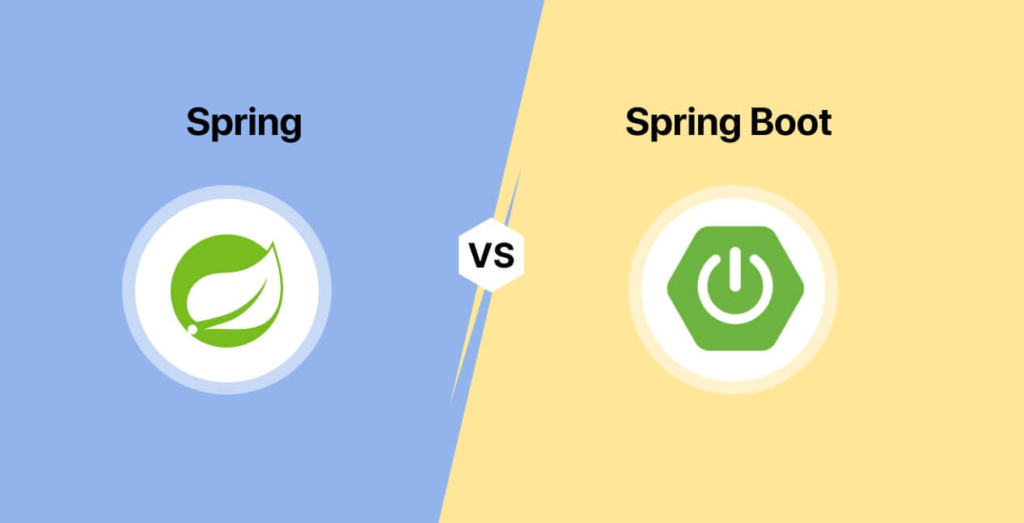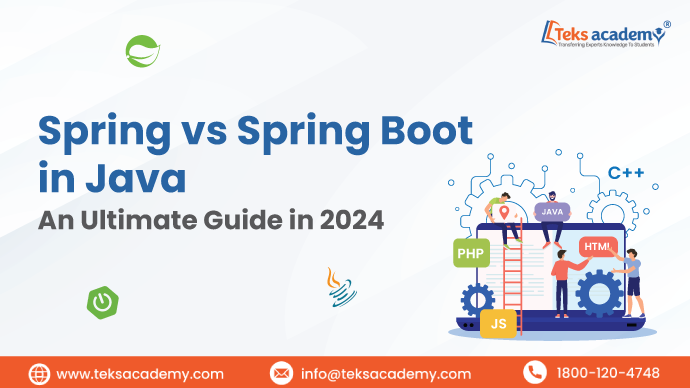Java stands as a constantly evolving technology. Understanding the primary difference between Spring and Spring Boot, is most important for aspiring Full Stack Java Developers. These powerful frameworks offer unique features and capabilities. They create robust and scalable applications.
If you are building a simple web app or a highly complex enterprise solution, then understand when and how to apply these technologies. To embark in 2024 by becoming proficient in these trending frameworks then join the best online java course.
What is Spring?
Spring is one of the most versatile and powerful frameworks in Java. It focuses on several areas of application development. It also provides a wide range of features that help simplify Java EE (Enterprise Edition) development and help developers be more productive.
Main Features of Spring:
- IoC (Inversion of Control): Managing object creation and their dependencies through dependency injection.
- Aspect-Oriented Programming (AOP): That helps in separating cross-cutting concerns like logging, security, and transactions from business logic.
- Spring MVC (Model-View-Controller): The Spring MVC framework is designed for building web applications.
What is Spring Boot?
Spring Boot is an extension of the Spring framework. It simplifies the process of building production-ready applications. With the set of tools and conventions, it streamlines the development process. Spring Boot helps the developers to create standalone, production grade applications quickly and with minimal configuration.
Main Features of Spring Boot:
- Auto-Configuration: Reduces the need for extensive XML (Extensible Markup Language) or Java configuration, allowing developers to focus on writing business logic.
- Standalone Applications: Makes running independently without requiring an external application server and includes an embedded web server (like Tomcat or Jetty).
- Spring Boot Starter Projects: The pre-configured templates that simplify dependency management for various functionalities, such as web development, data access, and security.
Join the best java course in Hyderabad at Teks Academy to gain in-depth skills.
Difference Between Spring and Spring Boot:

| Feature | Spring | Spring Boot |
| Framework Type | Spring is a comprehensive backend framework with various modules for building Java applications. | Spring Boot is an extension of spring framework used to speed up the development of Spring-based applications. |
| Configuration | Requires extensive configuration using XML or Java-based configurations. | Provides auto-configuration, reducing the need for manual setup and configuration. |
| Standalone Applications | Spring applications typically require an external server (like Tomcat or JBoss) for deployment. | Spring Boot comes with embedded servers (e.g., Tomcat, Jetty), allowing developers to create standalone applications. |
| Dependency Management | Developers need to manually manage dependencies based on the project requirements. | Spring Boot provides pre-configured starter dependencies (e.g., spring-boot-starter-web) to simplify dependency management. |
| Micro services Support | Spring has support for building microservices, but additional setup is required. | Spring Boot is optimized for microservices, with built-in support for Spring Cloud, making it easier to create distributed systems. |
Conclusion:
As Java is developing continuously, understand the key difference between Spring and Spring Boot. It acts as one of the key factors to become an efficient Full Stack Java Developer. Looking to boost your skills and stay ahead in 2024, then enroll in the best java course. At Teks Academy, the best software training institute in Hyderabad, you will gain hands-on experience with these powerful frameworks.
Teks Academy is also associated with courses related to various skills from data science courses to digital marketing, full stack java, AWS and DevOps and more. To enhance your career prospects, you can undertake any of these skill courses customizable to your preference.







One Response
This excellent website really has all of the info I needed
about this subject and didn’t know who to ask.